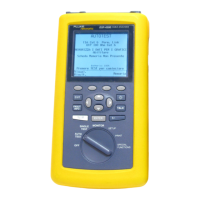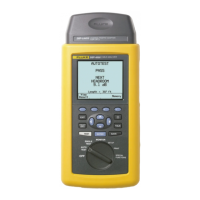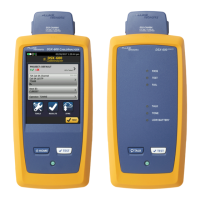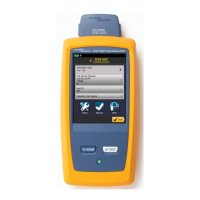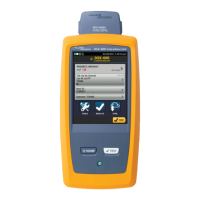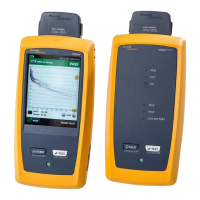Index (continued)
3
interpreting the plot, 7-14
results screen items, 4-7
running the analyzer, 4-6
Headroom, 3-6
Hub port capabilities, 4-26
Hub port locator, 4-22
—I—
ID. See Cable ID
Impedance
anomaly on coaxial cabling, 3-26
anomaly on twisted pair, 3-11
explanation of characteristic impedance,
7-10
minimizing impedance discontinuities, 7-
11
test for coaxial cabling, 3-25
test for twisted pair, 3-11
warning result, 3-11
Impulse noise threshold, 4-23
Incompatible standards versions, 5-2
Incrementing cable IDs, 2-37
Inductive pickup device, 4-26
Insertion loss
explanation of insertion loss, 7-8
test for twisted pair, 3-12
Internal fault detected (error message), 8-4
—K—
Keys
for moving around screens, 2-4
functions, 2-19
—L—
Language
selecting, quick start, 2-8
LED functions, 2-22, 2-43
Length
test for coaxial cabling, 3-26
test for twisted pair, 3-10
variations between cable pairs, 3-10
variations between measured and actual,
7-20
Length units
selecting, 2-40
selecting, quick start, 2-8
Link. See Basic link
Link interface adapter
basic use, 2-5
features, 2-23
status, 2-6
tests supported by adapters, A-2
Link performance grade, 3-6
LinkWare, 5-6
—M—
Maintenance, 8-1
Marginal test results, 2-9
Memory
capacity, 3-27
capacity and type, 8-23, 8-24
full, 3-31
maintained by lithium battery, 8-3
space available, 3-31
status, 2-40
Memory card
formatting, 2-6
inserting and removing, 2-6
Monitor
hub port capabilities, 4-26
monitoring impulse noise, 4-22
changing the noise threshold, 4-23
connections, 4-24
screen items, 4-25
Monitoring network activity, 4-19
connections, 4-19
screen items, 4-21
Multimedia card. See Memory card
—N—
New (softkey), 2-36
NEXT
explanation of NEXT, 7-11
minimizing NEXT, 7-17
NEXT@Remote test results, 3-16
plot description, 3-15
results screen items, 3-14
Noise
causes of electrical noise, 7-9
changing the impulse noise threshold,
4-23

